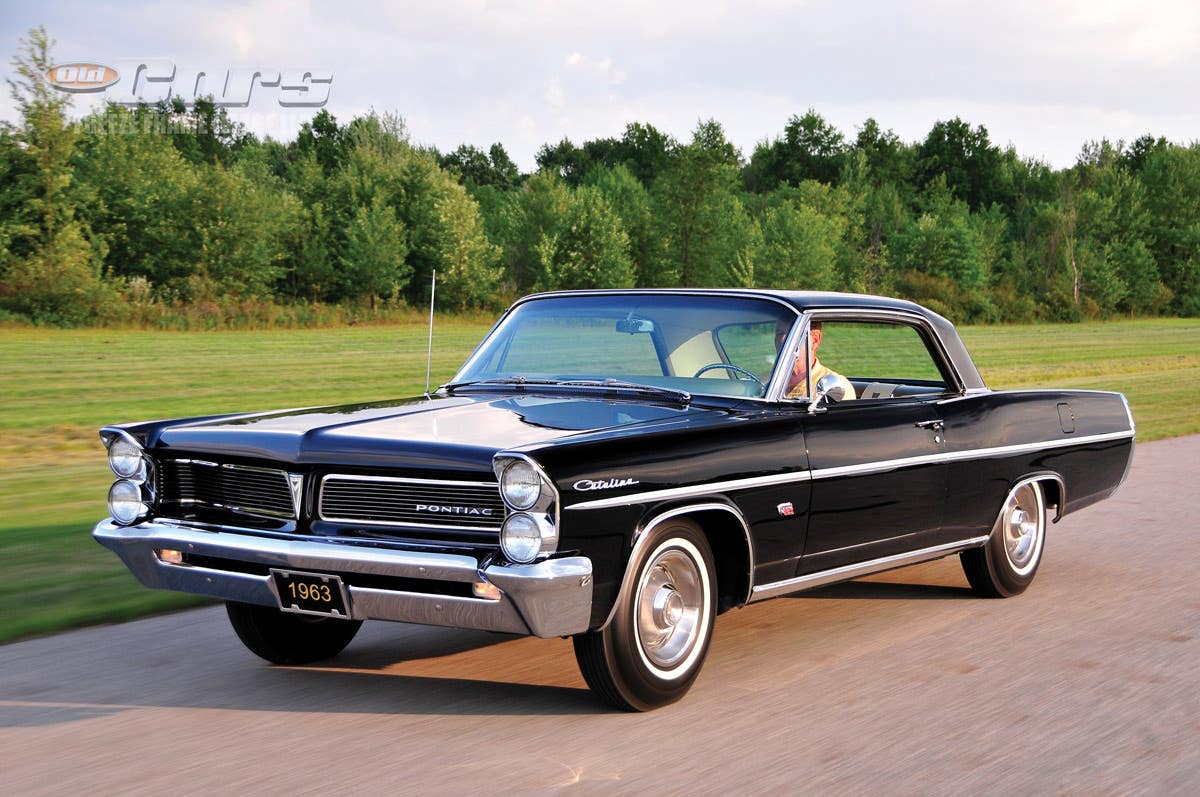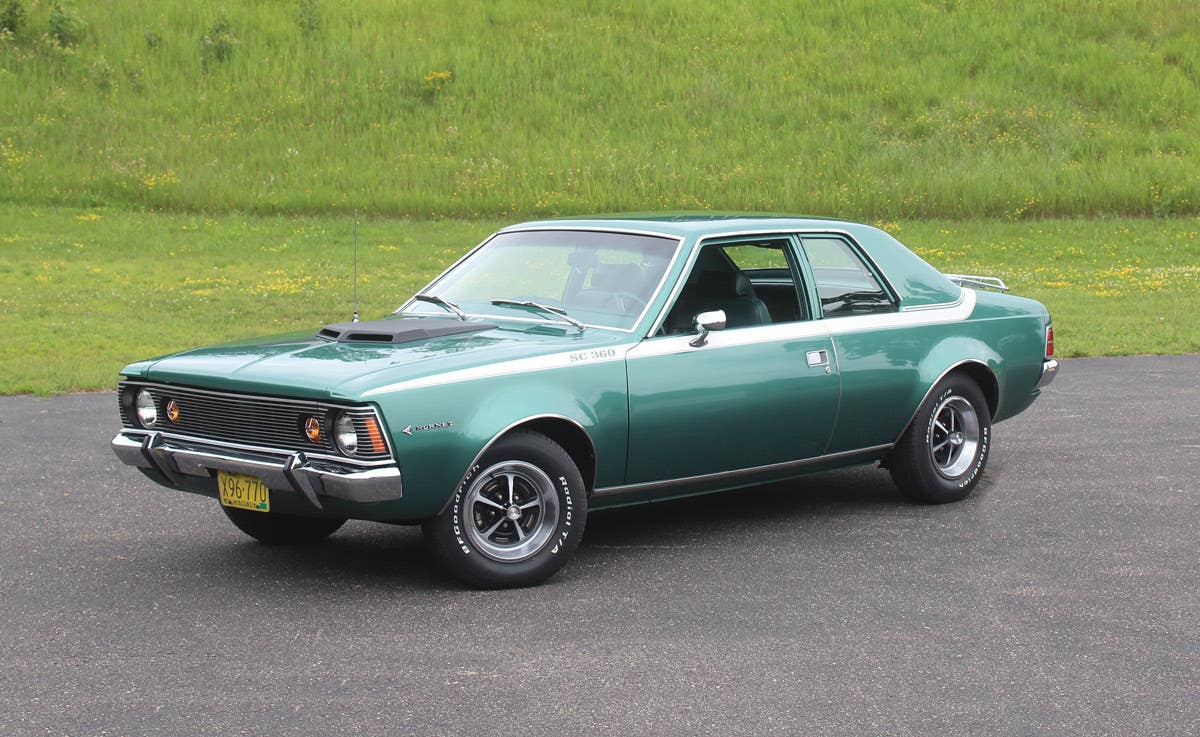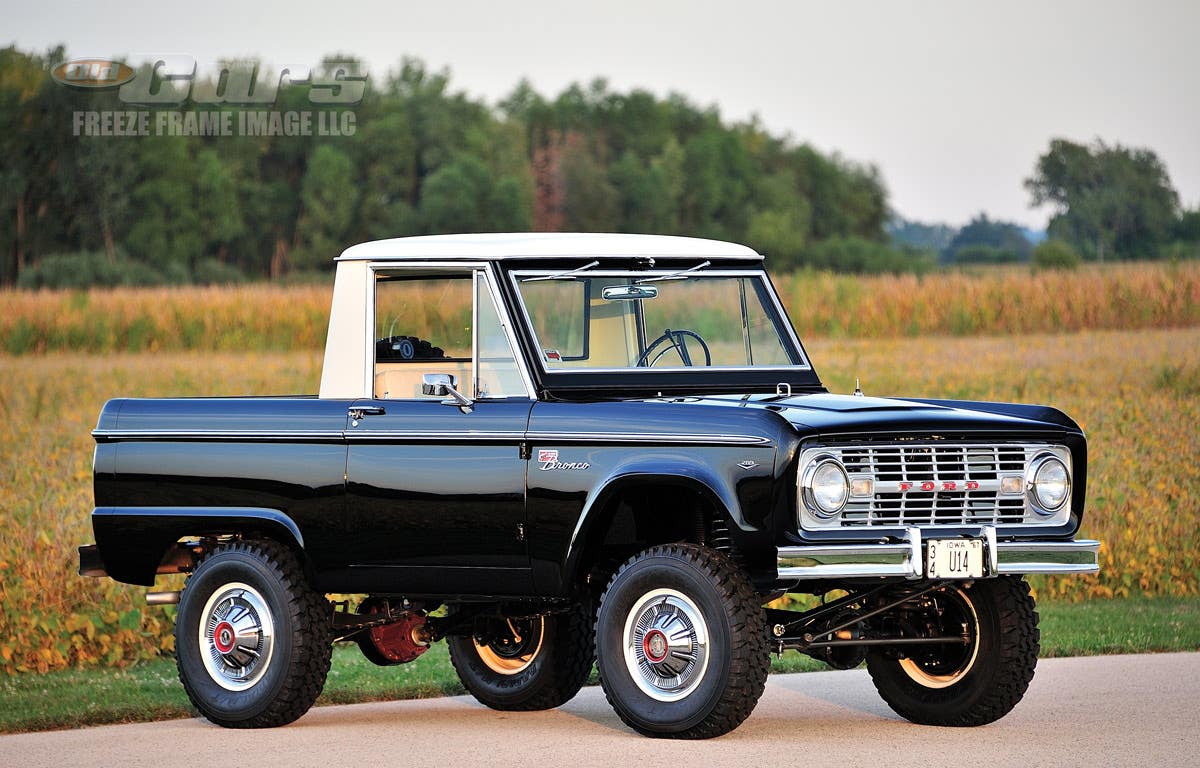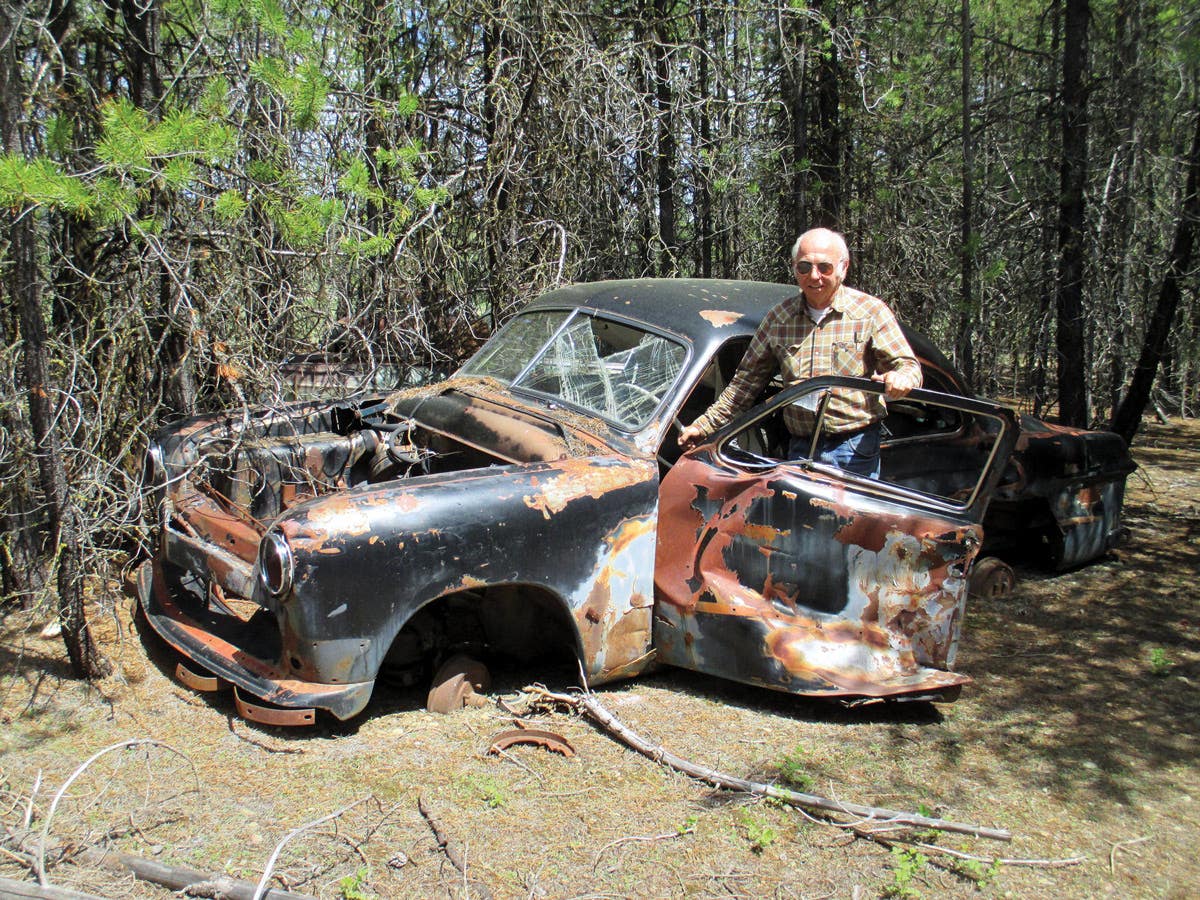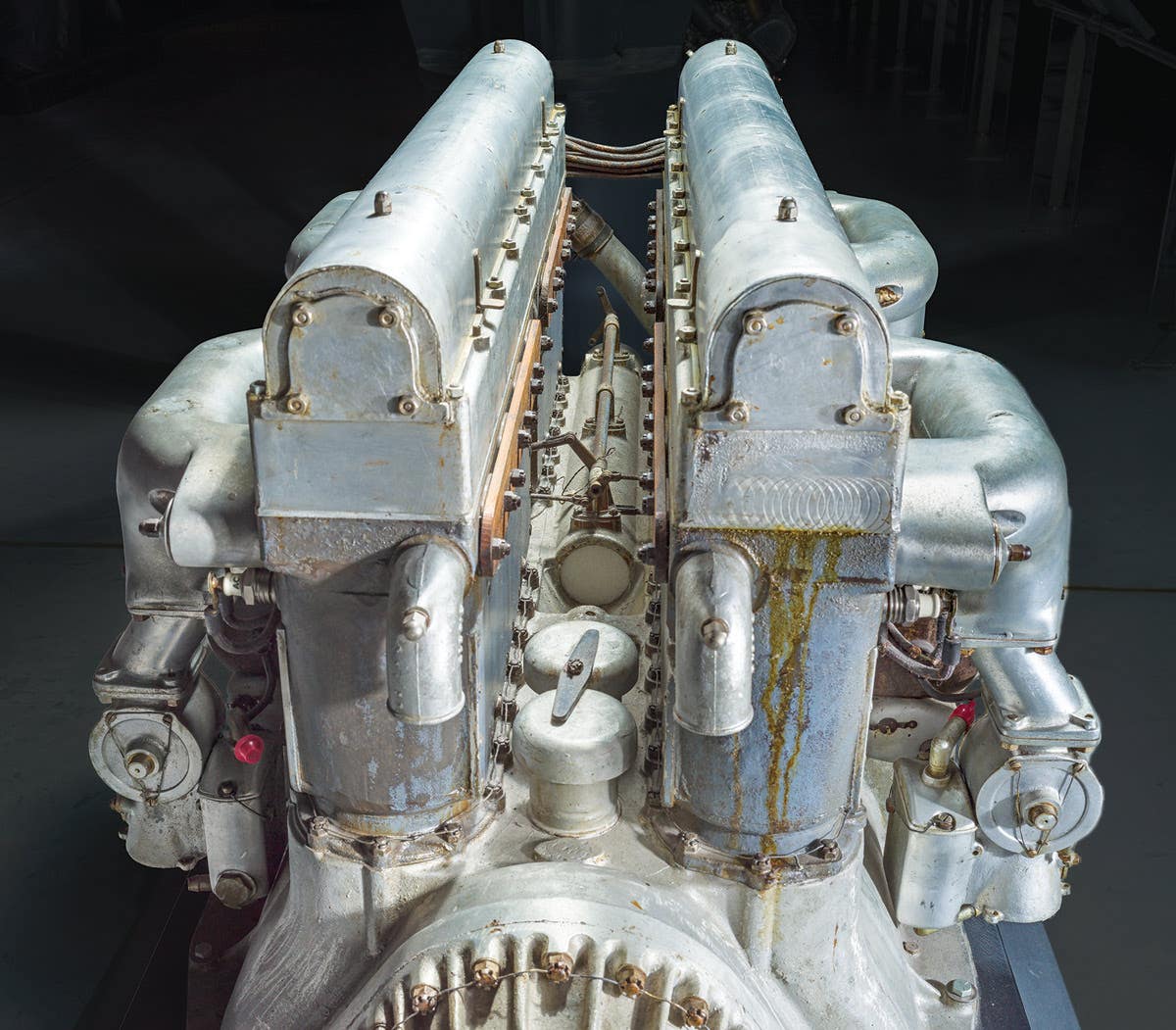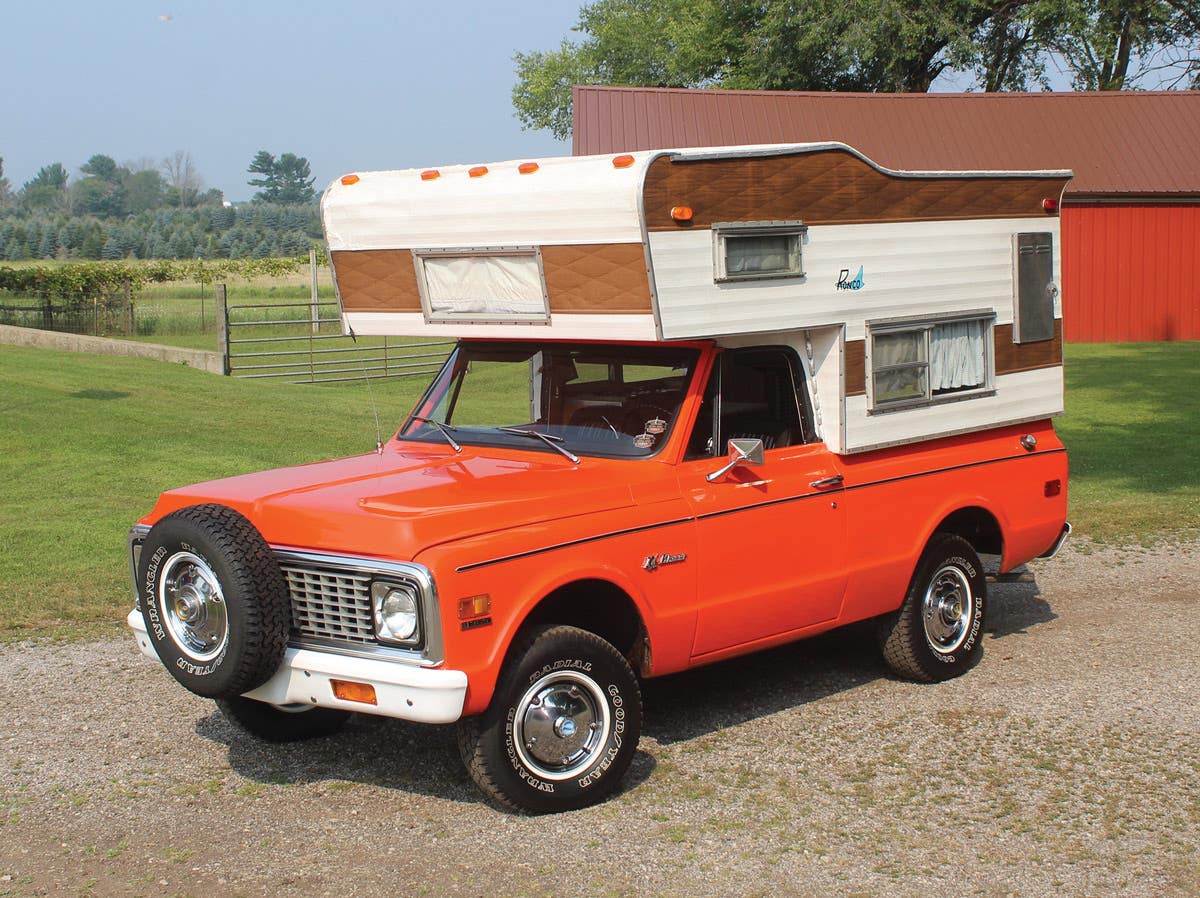Car of the Week: 1964 Chevrolet Rampside Pickup
On top of all the other things to like about the truck — it’s wonderful condition, originality and scarcity among them — Enfield’s turquoise-and-white 1964 Chevrolet Rampside is a true “barn find.”
By Brian Earnest
Chevrolet Corvair guys have a reputation for believing that “one is never enough.” Jim Enfield of Felton, Pa., would be one of those guys. He doesn’t deny it. He didn’t start out trying to become a Corvair collector, of course, but one led to another, and another, and another.
“I’ve got four of them now. I’m out of space,” he laughs. “I even bought a trailer to keep one of them in.”
Enfield’s stable includes an award-winning 1963 Monza convertible, 1962 station wagon and a 1962 Corvan panel van. Perhaps his most interesting vehicle, however, is his 1964 Rampside pickup — a true oddity in any old car circle and one of the most unique pickups ever built.
On top of all the other things to like about the truck — its wonderful condition, originality and scarcity among them — Enfield’s turquoise-and-white Rampside is a true “barn find.”
“I found this one in an online ad in I think 2004 from a guy in Mechanicsburg, Pa.,” he recalled. “I went up and looked at it and thought, ‘Well, I’m going to get this!’ The guy pulled it out his barn that it had been in for 19 years. It wasn’t driven for 19 years until I bought it.”
Amazingly, the truck still ran. It was in no shape to drive back to Felton, but the fact that it started at all was a bonus for Enfield. “It was running very rough. It was only hitting on about three cylinders, I think,” he chuckled. “But it ran enough that I drug it up on the tow dolly and we took it home.”
Enfield isn’t sure why the previous owner parked the truck and let it sit for so long. The Rampside had clearly been taken care of over the years. “He had a little farm there, so I guess it was for light farming,” he said. “I couldn’t find anything else about it and I really don’t know what he planned to do with it.”
The truck was the third Corvair Enfield had ever owned. He got his first rear-engined machine as a teenager and quickly became a fan for life. “My first car was a 1963 Corvair convertible … and about 12 years ago I found another one just like my original one, " he said.
“A convertible — they are like a dime a dozen. There are many, many Corvair convertibles around — of the early models. I wanted something different, more rare.”
He found it in the Rampside, the Spartan, uniquely utilitarian hauler that lived in the Chevrolet line from 1961-’64. The Corvair 95 series was unveiled for the ’61 model year as America’s first true small van and a director competitor to the similarly rear-engined Volkswagen van. The driver-forward 95 series trucks and vans were built on the Corvair platform and used the same air-cooled rear engine and transaxle. The same fully independent suspension used on the Corvair automobiles also gave the 95 series trucks a definite advantage over their domestic competition.
Initially, the 95 series lineup included a Corvan panel van, Greenbriar passenger van, Loadside truck with a traditional rear tailgate, and a Rampside, with both a rear tailgate and bottom-hinged door on the passenger side that dropped down and transformed into a ramp. The side ramp door was covered on top with a rubber shield to protect it when the ramp was lowered.
To move the driver far enough ahead of the front wheels, the wheelbase was shortened to 95 inches — hence the 95 series moniker — which was 13 inches less than a Corvair sedan. The unitized pickups had a box that was 43 7/8 inches wide and 105 inches long. The bed was raised slightly in back to accommodate the engine. Standard equipment included a 144.8-cid, air-cooled opposed six-cylinder engine attached to a three-speed manual transmission. The Corvairs featured two carburetors and were rated at about 95 hp and 128 lbs.-ft. of torque. A liberal use of aluminum in the engine helped keep the Rampside’s weight to 2,665 lbs. and helped keep handling manageable, although the Corvair commercial rigs were never lauded for their agility. The trucks had a respectable payload rating of 1,500 lbs. with a gross vehicle weight ceiling of 4,700 lbs.
The engine was accessed from a flip-up panel in the rear of the bed. Up front were two sets of prominent headlights, and a concave, sculpted contrast strip ran from nose to tail. Inside was a simple bench seat, large truck-style steering wheel and minimalist dash.
The Loadside pickup was discontinued after the 1962 model run, but the Corvan and Rampside lasted for four years before dwindling sales prompted GM to give up on the line. The 95 Series trucks and vans got off to a decent start in 1961 when Chevy built 15,806 of the Corvan panel vans, 10,787 Rampside trucks and 2,475 Loadside trucks. That was as good as it got, though, and by 1964 only 8,147 Corvans and just 851 Rampside vans were built before the plug was pulled on the Corvair commercial line, leaving the Greenbriar passenger van to soldier on alone.
Enfield wound up with one of the few 1964 Rampside pickups that are still rolling. His truck is equipped with an optional four-speed manual transmission (a $71.10 extra), gasoline heater (also $71.10) that ran off gas from the pickup’s tank, and two-tone paint ($25.10). The truck shows 55,000-plus miles on the odometer and is in impressive shape for a largely unrestored machine. Enfield has spruced things up and taken the engine apart, but most of the truck is unmolested.
“The first thing I do when I get a Corvair is tear the engine down and detail it and get it running right,” he said. “I spent quite a bit of time on the engine and engine compartment… It did run and it did drive, but boy did it smoke. I left a trail. I’m pretty sure he had to put a battery in it to start with. I’m not sure what else he did to get it to start. Corvairs are pretty tough!
“The condition was still very good and I still have not repainted it. Some of it is original paint. A lot of people say it looks pretty good. The exterior is the way I got it. I think it had been repainted, but I think that was was like 30 or 40 years ago. It does have some dents and dings, and everybody says that gives it character. The bed was sort of beat up. I’ve seen worse. The cab just needed freshening up. I wound up painting the inside. That was within the first year of me having it.”
The vinyl seat covering is original, Enfield believes, as is the headliner. The beat-up rubber mats on the floor have given way to carpet. Beyond that, there wasn’t much to fix up.
Although Enfield probably isn’t going to squeeze into his Rampside and head off on any coast-to-coast runs, short trips are always eventful and draw plenty of reaction. He tries to spread out his hobby miles between his four Corvairs, but Enfield knows he’ll always get plenty of attention when he shows up in his pickup, and he’ll have fun getting there. “I like driving it. It has 4-speed transmission and I like shifting gears! You can’t do that much anymore in new cars and trucks.
“I like the way it steers. It’s got a big steering wheel on it. It’s a truck steering wheel. It steers good as far as I’m concerned, and even though it’s only 95 hp it has some get up and go. The back of it is the heavy part, because the engine is back there. It’s good in snow, but I haven’t tried any lately!”
At shows, Enfield runs into plenty of folks who’ve never seen a Rampside Corvair truck. He’s used to fielding all kinds of questions. “Some people even think I built it like that or modified it. ‘Why did you cut the side out and make that door?’ I get a lot of that.
“There are a few thousand around the country — I don’t know the exact number. Mine is the rarest of the bunch. It’s a 1964 which there were only 851 produced in ’64. I’m just going to keep it this way. It’s certainly not a 100-point vehicle, but people seem to think it’s nice and I like it the way it is.”
_____________________
If you’ve got an old car you love, we want to hear about it. Email us at oldcars@aimmedia.com



